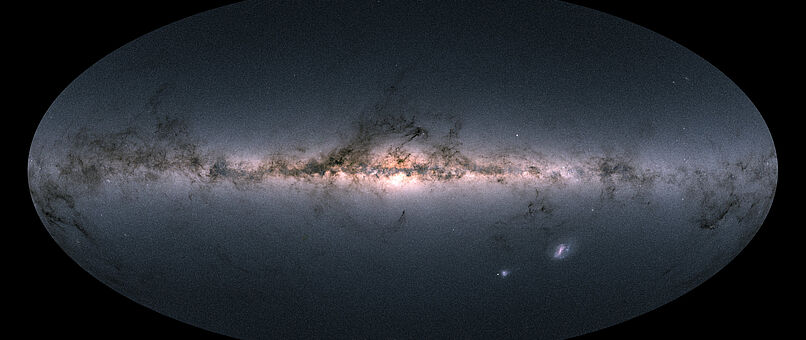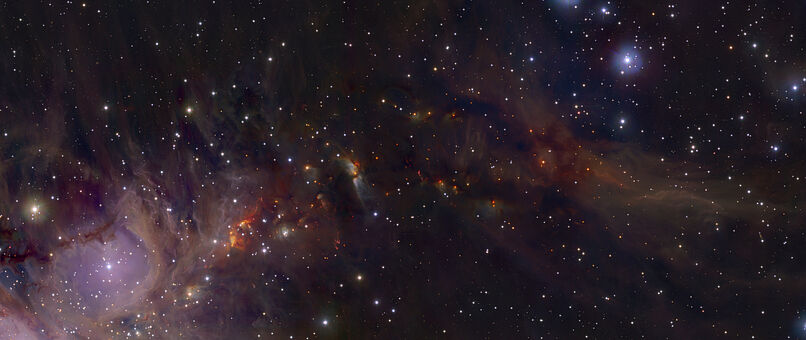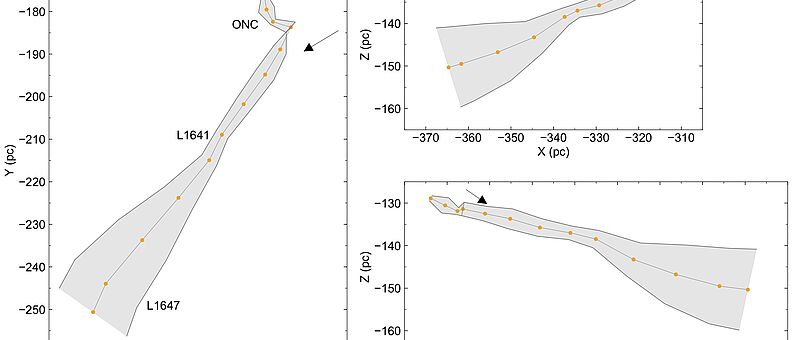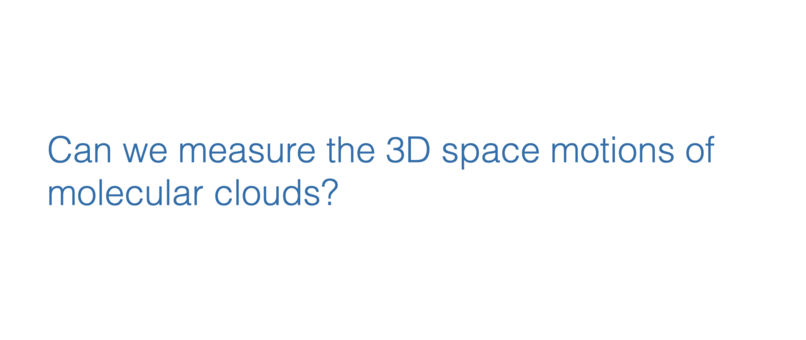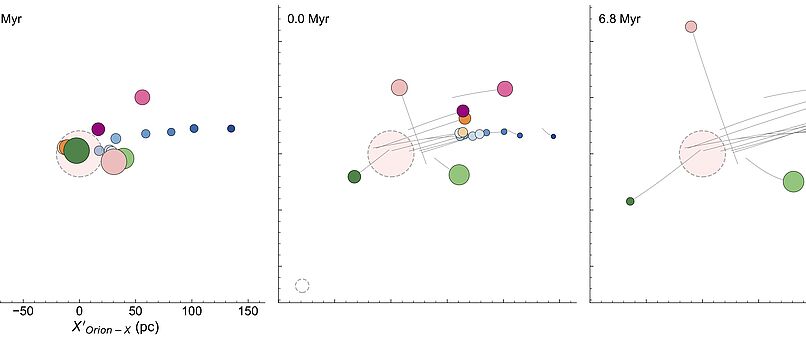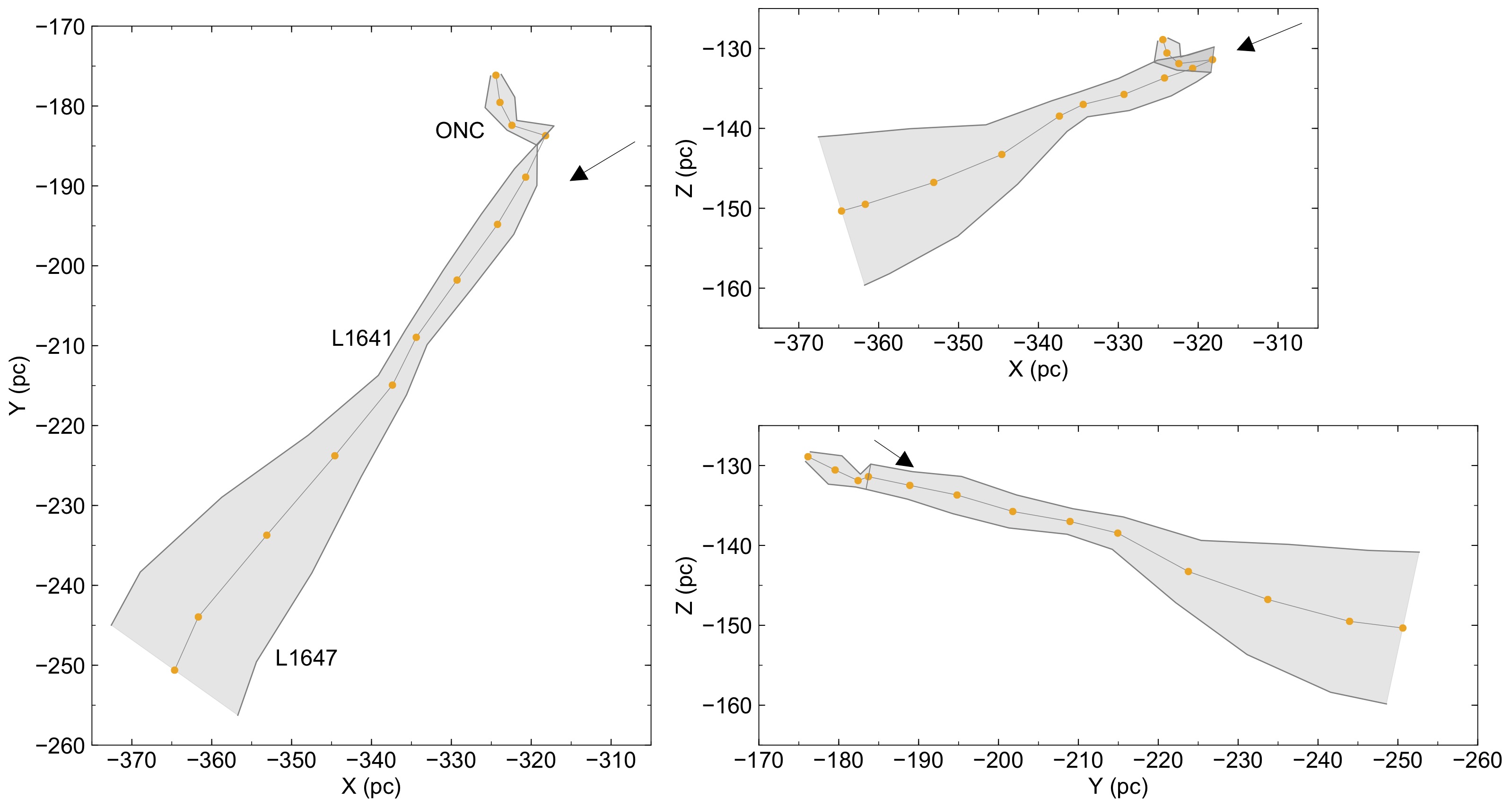Project Cloud Shapes - How 3D changes everything
The project "Cloud Shapes" is funded by the Austrian Research Promotion Agency (FFG P.Nr. 873708), carried out at the University of Vienna by the executive project leader Josefa Großschedl and the PI João Alves.
The goal of the project is to improve our knowledge of the star formation history in local star-forming regions. This is achieved by analyzing the molecular clouds and young stars in 3D space, allowing a better understanding of the interactions between gas and stars.
The project is driven by the high precision astrometry of ESA's Gaia space mission (parallaxes and proper motions), and by auxiliary data including dust maps from ESA Herschel, infrared data from ESO VISTA (VISION, VISIONS), and radial velocity surveys (e.g., APOGEE, Gaia-ESO, GALAH).
In a pilot study we were able to reconstruct, for the first time, the 3D shape of the Orion A giant molecular cloud (Großschedl et al. 2018) as shown in Figure 1 below. This was achieved by utilizing the Gaia parallaxes of young stellar objects (YSOs), which formed recently in Orion A, to estimate their distances.
By estimating the average YSO distances along the cloud we were able to indirectly infer on the cloud distances. The study revealed the true extent of the cloud, which is about 300 Light Years (about 90 pc) instead of the previously assumed 130 Light Years (about 40 pc), which was estimated earlier from 2D projection.
To use YSOs as probes for cloud distance and cloud motion is now proven to be a valid concept. The recently formed young stars (ages on average about 3 Myr) are still connected spatially to the cloud out of which they formed (see e.g., Großschedl et al 2019), and they also share on average the same line-of-sight motion as the gas, the same radial velocities (RVs). See for example, Hacar et al. (2016), or Großschedl et al. (2021).
The shared motion of young stars and molecular clouds was proven by directly comparing gas radial velocities from CO observations (Nishimura et al. 2015) with stellar radial velocities (SDSS/APOGEE-2) (see here the position-velocity diagram for Orion A). Consequently, it is very likely that also the proper motions of the young stars (transverse motion in the plane of the sky) still resemble the average cloud motion.
This innovative approach allows us, for the first time, to know the 3D structure and 3D space motions of molecular clouds in the Local Milky Way by using YSOs as indicators. This enables improved interpretations of the recent star formation history of individual regions, as presented in Großschedl et al. (2021), see our results here.
The results demonstrate the potential of this approach. Especially in the Solar Neighborhood, we will be able to reconstruct the 3D distributions, 3D shapes, and also 3D dynamics of virtually all nearby star-forming regions.
Moreover, by adding the somewhat more evolved young stellar populations (ages up to 25 Myr), which are still connected to these star-forming regions, allows an improved reconstruction of the formation history of the whole complexes (see our results on Orion and Sco-Cen here). We will be able to better understand possible interactions between stellar groups and the clouds and to localize the origin of feedback from massive stars that could have influenced the clouds and young stellar populations in the past.
Figure 1. The Orion A giant molecular cloud in 3D, reprojected in Heliocentric Galactic Cartesian coordinats. The orange dots are average positions of young stars, which are averaged within bins across the cloud. The black arrows indicate the line-of-sight from the Sun. Figure from Großschedl et al. (2018, A&A, 619, A106).

